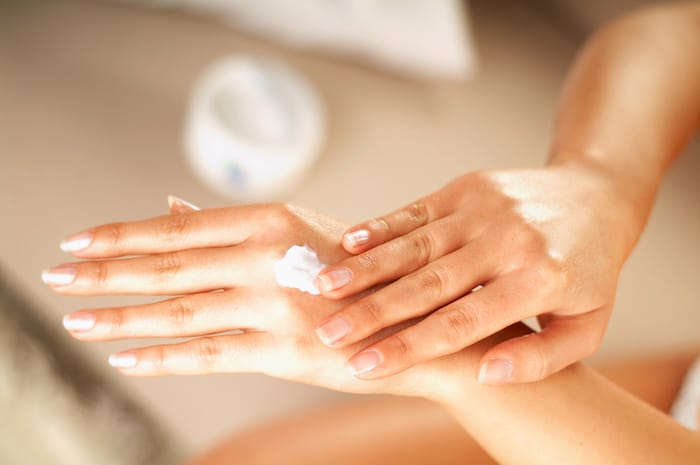- Calls to this hotline are currently being directed to Within Health or Eating Disorder Solutions
- Representatives are standing by 24/7 to help answer your questions
- All calls are confidential and HIPAA compliant
- There is no obligation or cost to call
- Eating Disorder Hope does not receive any commissions or fees dependent upon which provider you select
- Additional treatment providers are located on our directory or samhsa.gov
The Integumentary System and Eating Disorders
While it is understood that eating disorders take a severe toll on the body, how this occurs is less well-known. Understanding the impact that eating disorder behaviors have on necessary physical processes can help others identify warning signs of disordered eating as well as motivate those struggling to heal the various body systems that are harmed through disordered eating and exercising.
What is the Integumentary System?
One system that is affected by eating disorder behaviors is the Integumentary System. This system is the largest organ of the body and is made up of “the epidermis, dermis, hypodermis, associated glands, hair, and nails [1].”
The epidermis, dermis, and hypodermis are layers of the skin. The epidermis refers to the external layer of the skin. The dermis is the middle layer and consists of “connective tissue, blood vessels, oil and sweat glands, nerves, hair follicles, and other structures [2].” Finally, the hypodermis is the deepest and thickest layer of skin and is sometimes referred to as the subcutaneous tissue.
The function of the integumentary system as a whole is to “form a physical barrier between the external environment and the internal environment that it serves to protect and maintain [1].” This organ “performs many intricate functions such as body temperature regulation, cell fluid maintenance, synthesis of Vitamin D, and detection of stimuli [1].” It is also crucial to processes such as immune-building, wound healing, and providing sensations via nerve endings that indicate what the body needs as well as what is in the environment and how the body should respond to it.
Related Reading
- Health Issues from and Eating Disorders
- Nervous System and Eating Disorders
- How Disordered Eating Harms Respiration
- Circulatory Problems from EDs
- Digestive Concerns from Eating Disorders
- How Bones and Muscles are Affected by Eating Disorders
- How EDs Affect the Endocrine System
- How an Eating Disorder Damages the Reproductive System
- Your Immune System and Eating Disorders
Physical Effects of Eating Disorders on Hair, Skin, and Nails
Eating Disorders and the Skin
The skin is deeply affected by the malnourishment and dehydration that eating disorders result in.
Asteatosis (also known as “xerosis”) refers to abnormal dryness of the skin and occurs in approximately 70% of those with anorexia nervosa [3]. Xerosis “is caused by a decrease in skin surface lipids, by compensatory hypothyroidism, diuretic abuse, cold intolerance, arm or leg coldness, and compulsive washing [3].” One study notes that this begins between 2 to 4 weeks after consistent nutritional restriction as the body decreases sebum production by approximately 40% [3].
Eating disorders also lead to the skin becoming yellow and discolored due to hypercarotenemia. It is believed that, for those with eating disorders, this is “chiefly related to a diet that is rich in β-carotene sources, mainly carrots and other low-energy yellow vegetables [3].” It is also believed to be related to a defect in how the body metabolizes and uses Vitamin A [3].
The body’s circulatory functioning is also impaired leading to blue and/or purple coloring of the hands and feet (acrocyanosis) due to poor circulation [3]. Acrocyanosis also leads to “facial and truncal pallor, a slower pulse rate, and higher fasting plasma glucose levels [3].” It is believed that this physical symptom of malnourishment “may be a protective mechanism against excessive heat loss, dehydration, emotional strain, or a primary disturbance in thermoregulation [3].”
Russell’s Sign is also a more obvious indication of eating disorders and directly indicates purging behaviors. This involves an individual having calluses on the knuckle due to using the hands or fingers to initiate vomiting. The teeth often scrape the upper knuckle, causing injury.
Other skin impacts include acne and pruritus, severe skin itching, and busted capillaries in the eyes due to strain from vomiting.
Impact of Eating Disorders on Hair & Nails
The impact that frequent purging or consistent malnourishment can have on hair and nails is equally harmful.
One of the biggest impacts involves both the skin and hair and is called “lanugo.” Lanugo is a common sign of anorexia nervosa symptoms and “presents as fine, downy, pigmented hairs on the back, abdomen, and forearms [3].” Researchers believe this occurs as a result of hypothyroidism.
“Alopecia, hair loss, and opaque and fragile hair is reported in 17% to 61% of patients [3].” Additionally, trichotillomania also referred to as “hair-pulling disorder,” is more prevalent in females with bulimia nervosa [3].
Individuals with eating disorders also develop brittle hair and nails due to insufficient vitamin and nutrient intake.
Can Eating Disorder Recovery Heal the Integumentary System?
There is hope for those working toward recovery from their eating disorder, as almost all of the hair, skin, and nail manifestations of eating disorders go away with weight restoration and proper nourishment.
As one study notes, “resolution of skin eruptions in patients with ED almost always depends on the treatment of the underlying disorder,” making it important to receive the appropriate eating disorder treatment that allows an individual to renourish while also addressing the psychological maintaining factors of the disordered behaviors [3].
Resources
[1] Kim, J. Y., Dao, H. (2021). Physiology, integument. StatPearls Publishing. Retrieved from https://www.ncbi.nlm.nih.gov/books/NBK554386/. [2] Unknown (2021). Definition of dermis. National Cancer Institute. Retrieved from https://www.cancer.gov/publications/dictionaries/cancer-terms/def/dermis. [3] Strumia, R. (2013). Eating disorders and the skin. Clinics in Dermatology, 31:1.
Author: Margot Rittenhouse, MS, LPC, NCC
Page Last Reviewed and Approved By:



